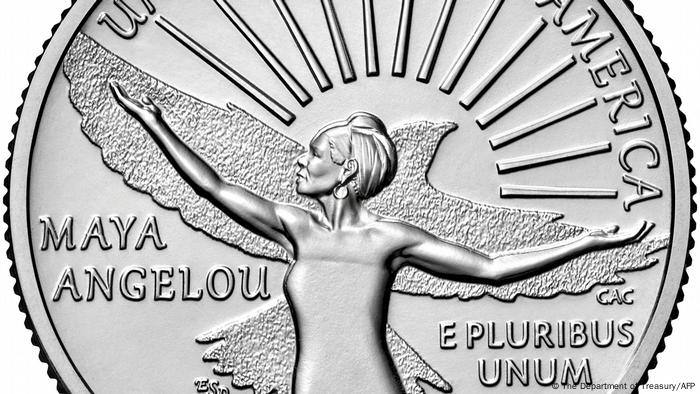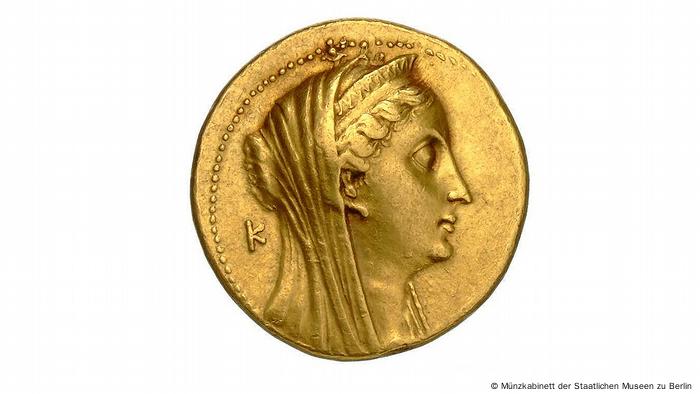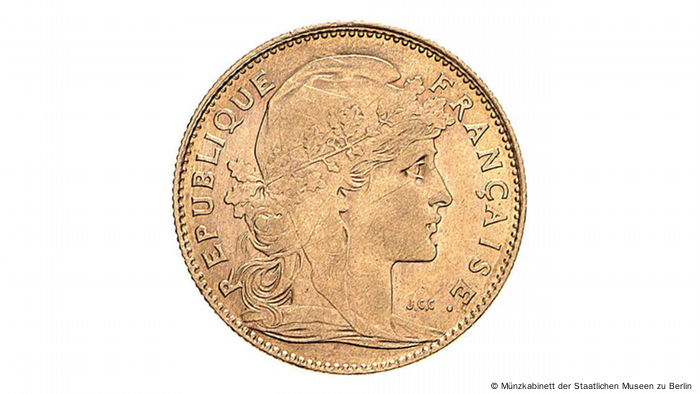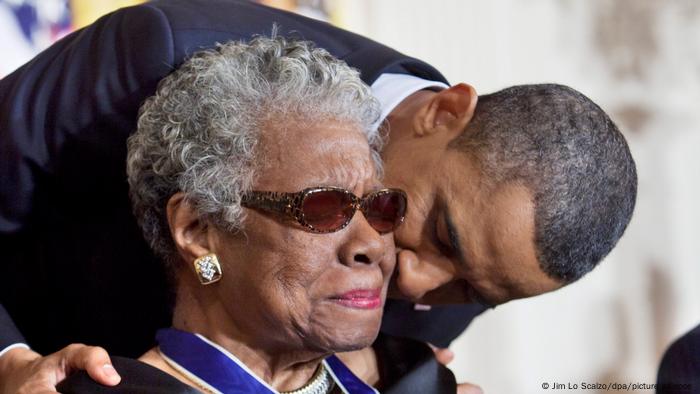Rulers, Goddesses and Activists: Portraits of Women on Coins
This non-currency coin depicts Lakshmi, the Hindu Goddess of Wealth
Maya Angelou fought alongside civil rights activist Martin Luther King for equal rights for Black people in the United States.
Now, a quarter dollar coin has been minted to honor the American woman who died in 2014, making her the first African American woman to receive such a tribute.
The coin is the first of a special mintage series — the American Women Quarters Program — of 20 depictions honoring women's achievements that will be completed by the US Mint by 2025.
The coin's image is a reference to activist, poet and author Angelou's 1969 autobiographical book, "I Know Why The Caged Bird Sings," in which she chronicles her life growing up in the US during segregation.
Activist and writer Maya Angelou depicted on new US quarter coin
There are a host of milestones in the series: Astronaut Sally Ride is the first lesbian woman to be depicted on US money; civil rights activist Nina Otero-Warren is the first Hispanic woman; likewise Wilma Mankiller, the first female principal chief of the Cherokee Nation.
Women depicted on coins for 2,500 years
The decision to depict minorities on 25-cent coins shows that the US "has developed an awareness of the diversity of society, for which America can only be congratulated," says Bernhard Weisser of the Numismatic Collection of the National Museums in Berlin. That minorities like Maya Angelou are depicted on currencies is a historical novelty, he adds.
Historically, coins have served rulers to convey their "ideals and ruler virtues to the users — that is, their population, and their soldiers," the expert points out.
Queen Arsinoe II of Egypt is one of the first known historical women depicted on a coin
Female figures on coins, on the other hand, have been around ever since there has been minting. From goddesses in Antiquity, to rulers in the Renaissance, to leaders in modern times, many female figures have been immortalized on coins.
But the oldest known coins depicting actual people shown the likeness of a man. "As of 525 BC, the King of Persia was depicted on coins," Weisser says.
Yet women were also involved in the picture early on.
"With a view to the first representation of a female ruler, we head to Africa," Weisser says.
One of the first women of historical note to be immortalized by coinage was Ptolemaic Queen Arsinoe II of Egypt, in the 3rd century BC.
Coins minted as a symbol of power
Since then, women have been depicted on many national currencies, either during their lifetime or posthumously.
The female figures depicted on money have, until this day, primarily been political leaders: from Cleopatra VII (69-30 BC) to Queen Naganika, who was one of the first women in the history of India to direct the affairs of a state in the 1st century BC, to the Empress of the Holy Roman Empire Maria Theresa (1717-1780) — all of them issued coins featuring their likenesses.
The latter "created a thaler that enjoyed great popularity in Africa," Weisser said. "This thaler was reissued in Vienna until the 20th century."
Female rulers, like their male counterparts, wanted to use their images on coins to legitimize their rule and assert their influence on nations and empires. The best-known example is likely the portrait of Queen Elizabeth II, who is still depicted on numerous coins in the Commonwealth today.
Goddesses on coins
But not only real women had their faces minted on the coins of their empires.
Ancient empires, such as that of Greece or of the Kushans in Central Asia, were the first to depict female deities on their coins. While Greek rulers sought to portray the goddess Athena in various poses, the Kushans imprinted the goddesses Lakshmi and Ardochsho on their coins. In India, the goddess Lakshmi was long the most frequently depicted deity on coins.
Goddesses are rarely found on coins today, but other female figures that serve as allegorical personifications do appear — think of the French Marianne, the Peruvian Madre Patria, and Lady Liberty in the United States.
The French version of the notion of 'liberty': Marianne
Strong women on modern currency
Since the 20th century, there has been a trend toward recognizing women for their contribution to society. Examples include the popular former First Lady of Argentina, Eva Peron (1919-1952), whose portrait is still in circulation today on a special peso coin, and former Indian Prime Minister Indira Gandhi (1917-1984). Both were posthumously depicted on national currencies.
These coinages were intended to commemorate the women's political leadership roles and to cement their place in their countries' history.
In recent years, however, governments have also begun to recognize women beyond the political realm. Lady Diana, Princess of Wales, had a range of coins dedicated to her.
Civil rights activist Angelou was awarded the Medal of Freedom by US President Barack Obama in 2010
More and more women are also being recognized for their contributions to the arts and sciences. In addition, as in the case of Maya Angelou, states are increasingly recognizing the role of women activists, reflecting changes in society.
"In more recent times, women who have been paid tribute on coinage were, for example, active in the charity sector or were involved in raising children. But these were rather one-sided depictions of women — that is gradually changing," says Weisser.
So the new American Women Quarters Program coin series is in keeping with the times.
However, the female artists, activists and scientists depicted on them still have to share the coin with a man. On the "head side" of the coin, first President of the United States George Washington (1732-1799) is still depicted.
-

BITCOIN EXPLAINED: HOW IT WORKS AND WHAT IT IS GOOD FOR
The cryptic token
Bitcoin is thought of as a digital currency because it exists only virtually, without any physical coins or notes. It resides in a decentralized, encrypted network that is independent of commercial or central banks. This allows Bitcoin to be exchanged under the same conditions all around the globe. It's also a cryptocurrency, because it uses encryption to conceal users' identities and activities.
This article was originally written in German.
Get the latest reports & analysis with people's perspective on Protests, movements & deep analytical videos, discussions of the current affairs in your Telegram app. Subscribe to NewsClick's Telegram channel & get Real-Time updates on stories, as they get published on our website.



















